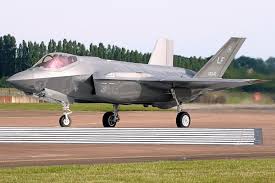In June, Pentagon officials reaffirmed the need to buy a total of 2,443 of the warplanes for the Air Force, Marine Corps, and Navy. Now Carlisle, along with other Pentagon officials and plane-maker Lockheed Martin, say buying more jets will lower their expensive per-plane price tag. The Air Force currently spends about $100 million (in 2012 dollars) to buy each F-35A; its goal is push that down to $85 million by the end of the decade.
“If you buy more, it drives the cost down,” Carlisle said.
Obtaining F-35s faster would also allow the service to more quickly retire old and maintenance-hungry F-16s. Delays in the F-35 program have kept many F-16s flying longer than expected, and some will need expensive overhauls if they are not retired soon.
“I would like to see the number go up to at least 60 [F-35 per year] if I can,” Carlisle said. “Eighty would be optimum, but given the fiscal constraints that we’re in today, 80 would be very, very hard to get to.”
It would be hard enough to achieve 60 in the next few years. In the Pentagon’s 2017 budget proposal, which Congress has not yet approved, the Air Force asked for 43 F-35s. Current plans would reach reach 60 planes per year in 2021
Right now, the Air Force’s battle-ready fleet of F-35s consists of 15 planes at Hill Air Force Base in Utah. Carlisle took pains to underscore that jet could fight if needed.
Currently, it could take on a limited set of missions: it can fly “basic” close air support, interdict enemy aircraft, and carry out “limited” suppression of enemy air defenses. It will be several years before F-35s can carry a full arsenal of weapons, and before all of its high-tech sensors, software, and displays are operational.
SOURCES – Defense One, Wikipedia

Brian Wang is a Futurist Thought Leader and a popular Science blogger with 1 million readers per month. His blog Nextbigfuture.com is ranked #1 Science News Blog. It covers many disruptive technology and trends including Space, Robotics, Artificial Intelligence, Medicine, Anti-aging Biotechnology, and Nanotechnology.
Known for identifying cutting edge technologies, he is currently a Co-Founder of a startup and fundraiser for high potential early-stage companies. He is the Head of Research for Allocations for deep technology investments and an Angel Investor at Space Angels.
A frequent speaker at corporations, he has been a TEDx speaker, a Singularity University speaker and guest at numerous interviews for radio and podcasts. He is open to public speaking and advising engagements.


